It may have been a defeat for Ukraine versus the Netherlands, but boy did they show real heart along the way. A stunning curler from West Ham forward Andriy Yarmolenko, who was relatively absent for the rest of the game, followed up by a superbly guided headed goal by Roman Yaremchuk clawed Ukraine back into this game after being 2-0 down.
It was the 25-year-old striker who was the driving force for former Chelsea striker Andriy Shevchenko’s side, and whenever he was involved in the play, Ukraine seemed more likely to score than at any other point. Upcoming next is a potential banana peel and a must-win against North Macedonia, who although lost 3-1 to Austria, displayed their merit for a large duration of that match – Shevchenko’s tactics have to be right.
In this tactical analysis, we are going to look at what Yaremchuk did so well against the Netherlands in the form of a scout report, what Ukraine need to do to get the best out of him going forward, and why he will be instrumental against North Macedonia.
Lovely link-up play: what went right for Yaremchuk versus the Netherlands
One consistent feature of the match against the Oranje in Yaremchuk’s case was his insistence to drop deeper or drift into wide zones to collect the ball. In these moments, the 6’1” forward would utilise his strong short-medium passing game to bring the likes of Serie A star Ruslan Malinovskiy, Yarmolenko, and Oleksandr Zubkov into the game, before dashing off into the gap in the opposition backline. Many of his passes were either sideways or backwards, but that is not to say they were not progressive of the play.
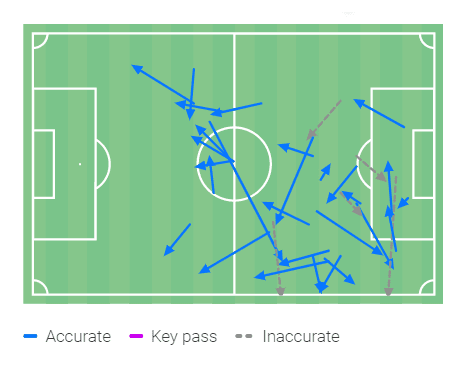
Yaremchuk’s pass map versus the Netherlands.
The Genk striker completed 31 passes at an 81% success rate, a decent figure for a centre-forward who was constantly trying to increase the tempo in the final third for a fairly stagnant attacking unit outside of attacking-midfielder Malinovskiy who attempted to inject some attacking impetus into the match if doing so unfruitfully. It was Yaremchuk’s ingenuity that added tremendously to Ukraine’s attack, acting as a source of unpredictability that the forward line was desperately lacking.
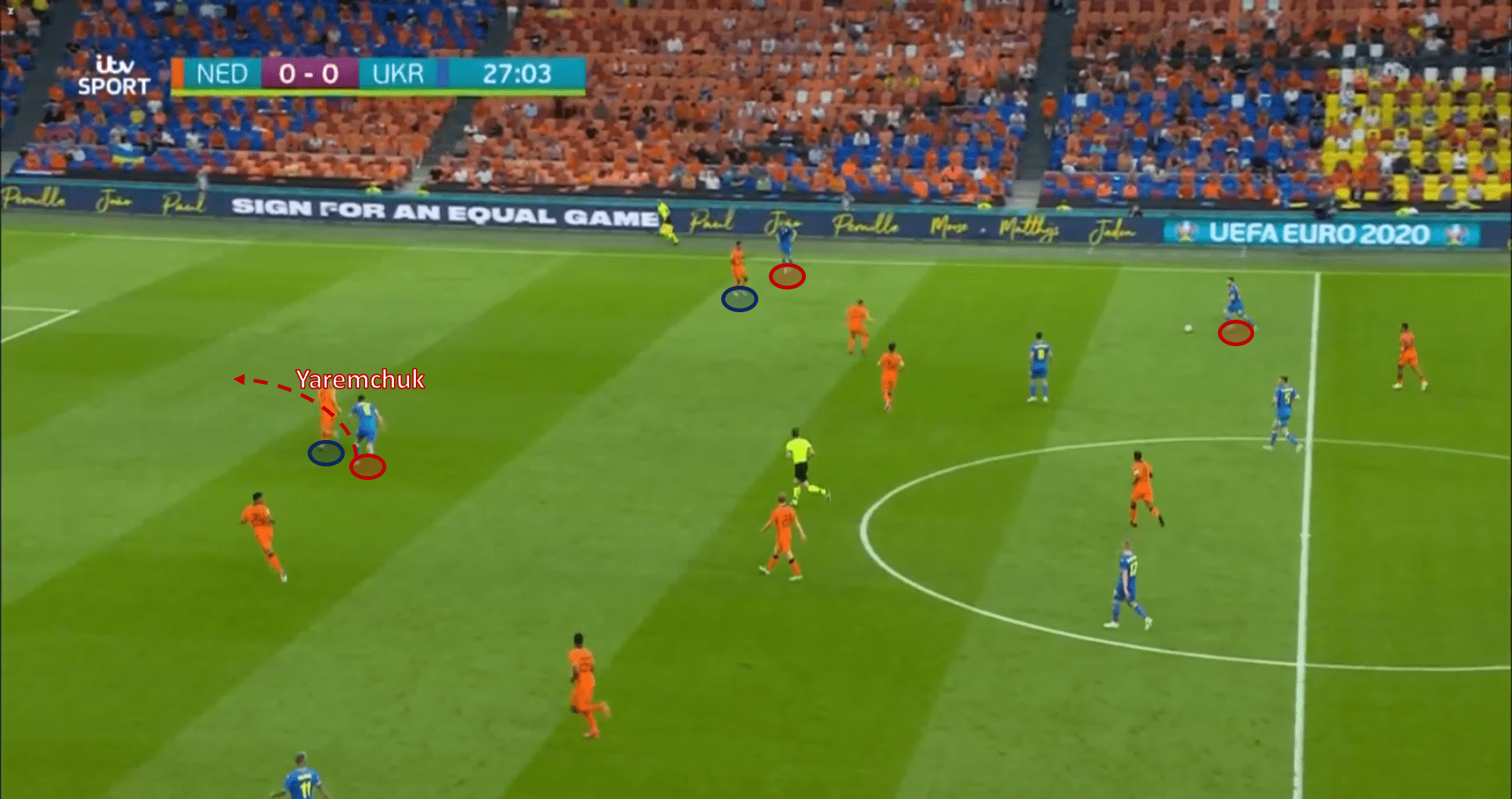
We can see here the beginning of Yaremchuk’s run into the half-space.
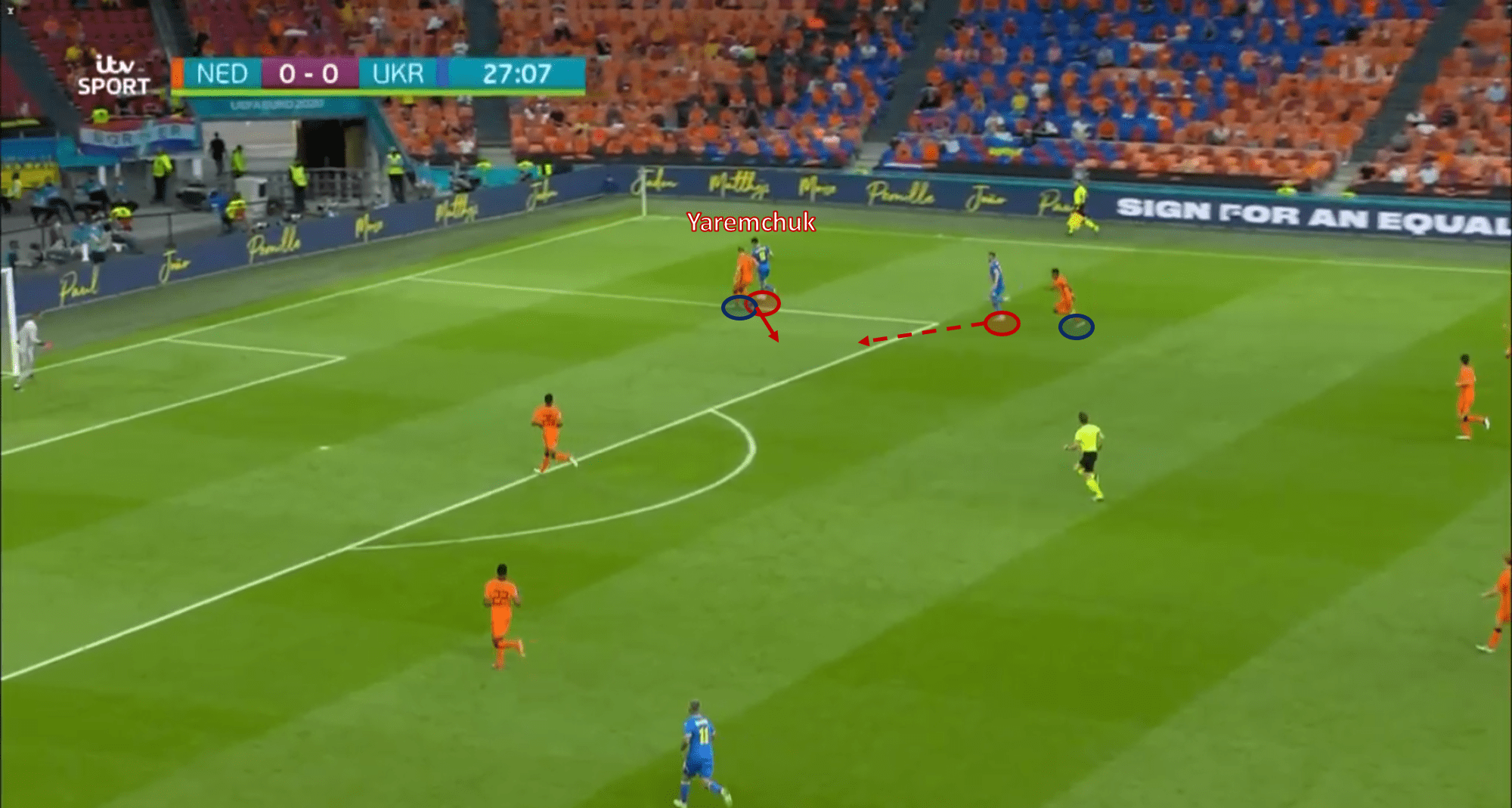
Noticing Yarmolenko’s run, Yaremchuk smartly plays the discreet backheel pass into the path of his run.
He also displayed good hold-up play in this match too. At 6’1” with a strong, well-built frame, Yaremchuk was able to leap and outreach defenders to the direct ball, before linking up his fellow attackers into the mix. These passes were regularly under a fair bit of pressure too, but that did not limit Yaremchuk’s ambition in his passing, as we saw when he sent the ball to Yarmolenko late on in the game.
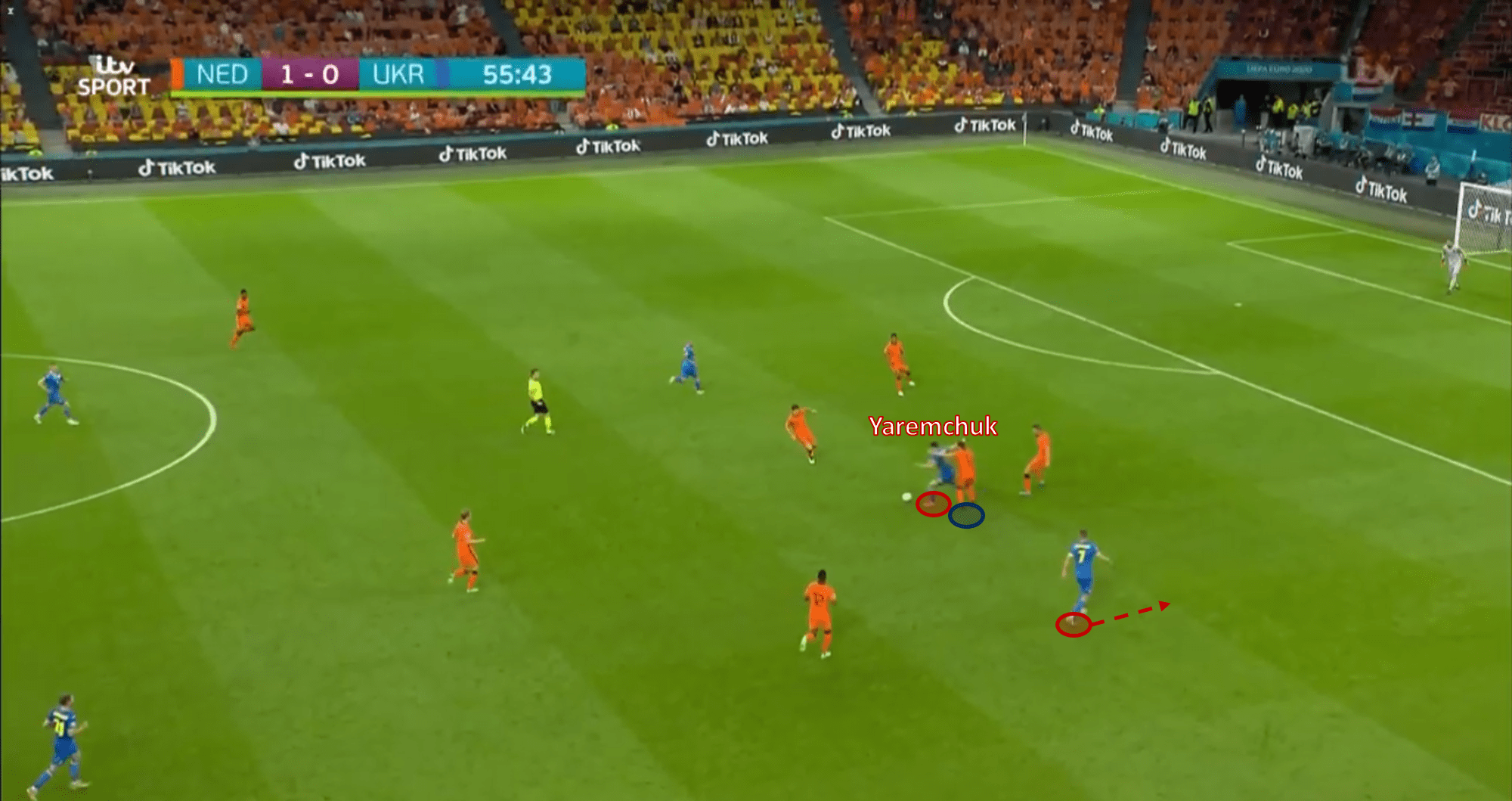
Yaremchuk receives the direct ball under pressure from Dutch defenders.
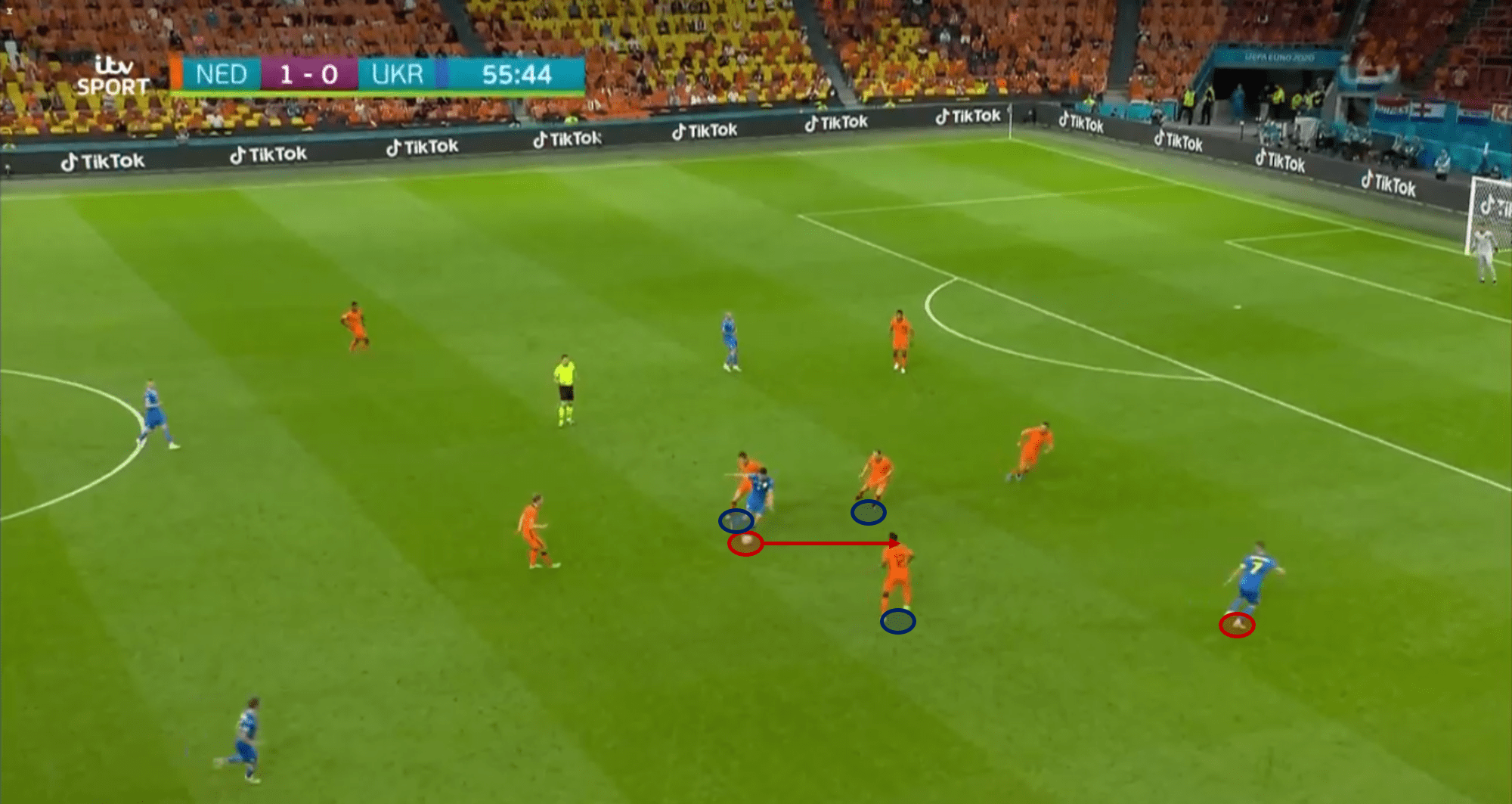
With good composure, Yaremchuk turns and plays the through pass to Yarmolenko in a wide zone.
It was Yaremchuk’s link-up play that earned Ukraine their first goal. He made the run off the ball which allowed him to collect the ball in a dangerous area nearby Yarmolenko. Yarmolenko smartly cut inside and received the pass in the process, before swiftly releasing an absolutely stunning strike into the top-left corner of the net.
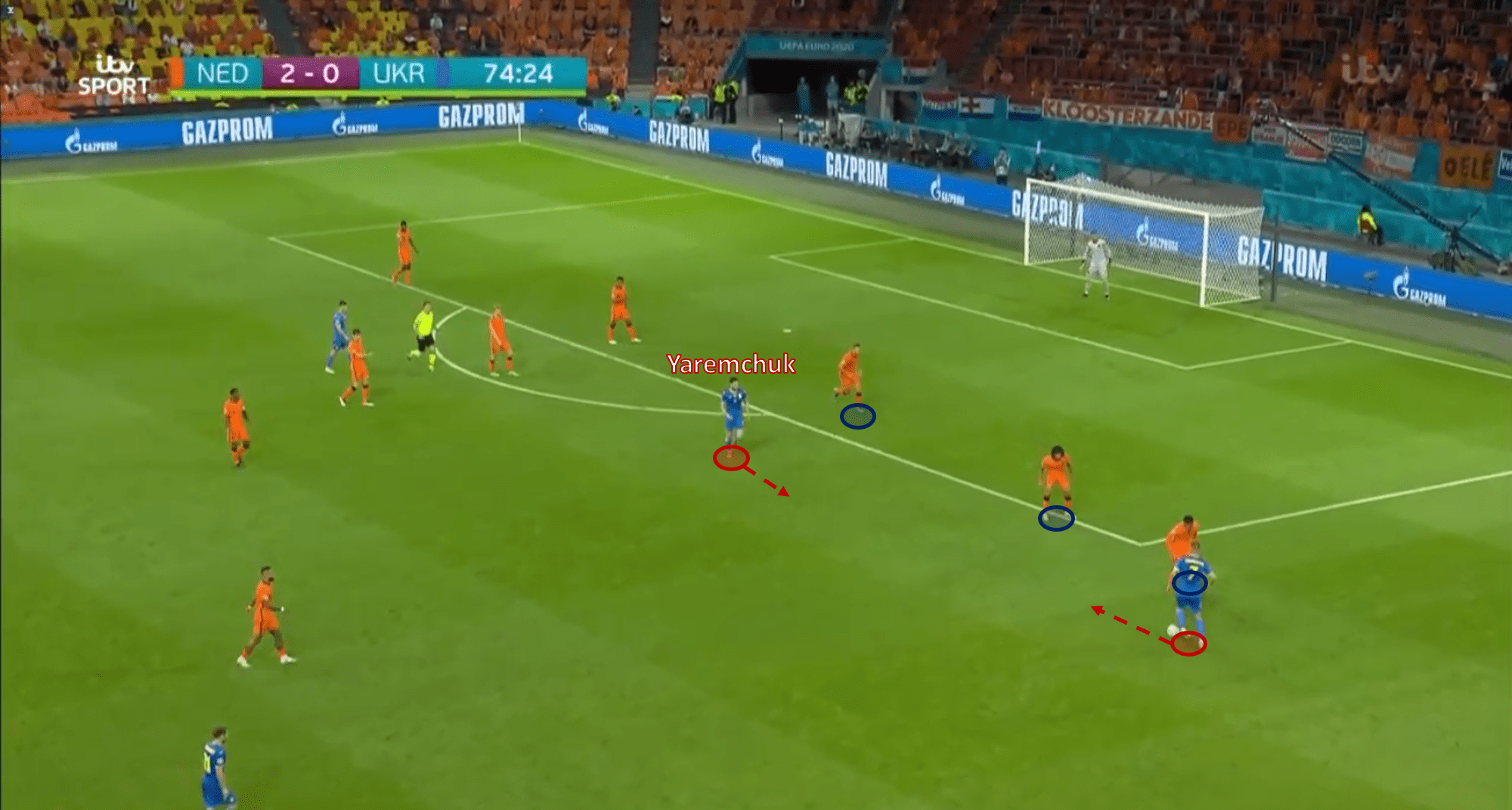
Yaremchuk here moves towards Yarmolenko to offer a passing option just outside the penalty area.
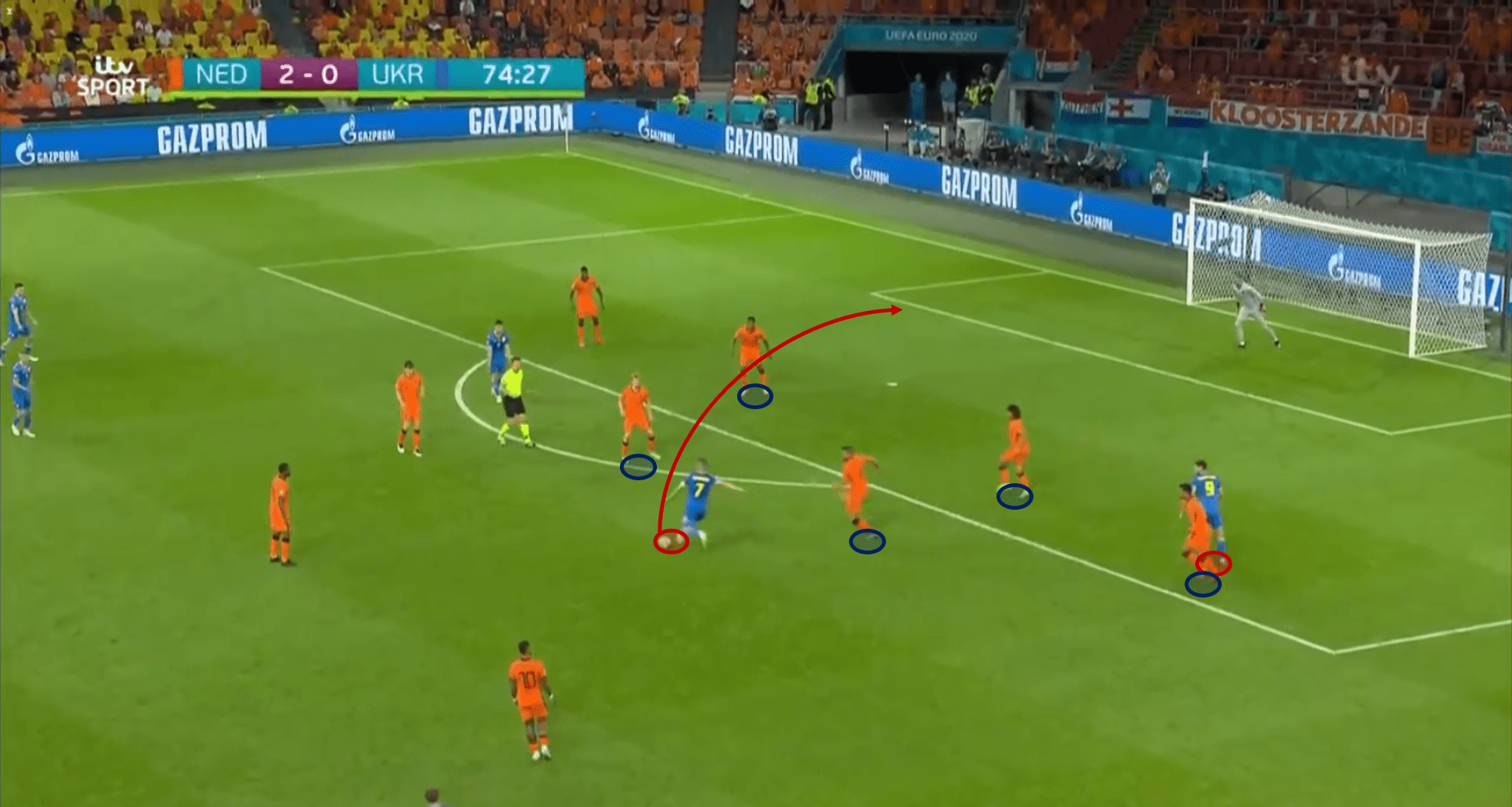
Yaremchuk plays the one-two with Yarmolenko who dispatches the ball into the top corner.
Dangerous off-the-ball movement needs to be met more frequently
Yaremchuk’s movement in the game against the Netherlands was one of his strongest aspects. His runs in behind the defensive line would constantly ask questions of his opponents. It is much easier to defend what is in front of you, so for Yaremchuk to consistently run in behind the way he did, made the Netherlands defence think twice before raising their line.
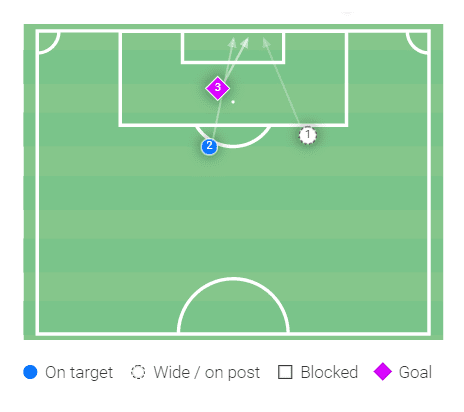
Yaremchuk’s shot map versus the Netherlands.
There was a variety in these movements too, and they were not his only form of impacting the game, as we mentioned his link-up play earlier. These runs were usually pretty sudden, going from a leisurely stroll into a full-blown sprint expecting a pass on the end of it. When there was no attempt to find him, he did not let his head drop and continued to make these runs for the full 90 minutes.
His movement was great, his service was not. On a pretty regular basis, Yaremchuk would make these darting runs from wide to centrally, or vice-versa, and not get met with any form of a pass. Malinovskiy is usually the primary supplier of these passes, but against the Oranje was he more interested in taking potshots on goal, for the most part, ruining a handful of goalscoring opportunities.
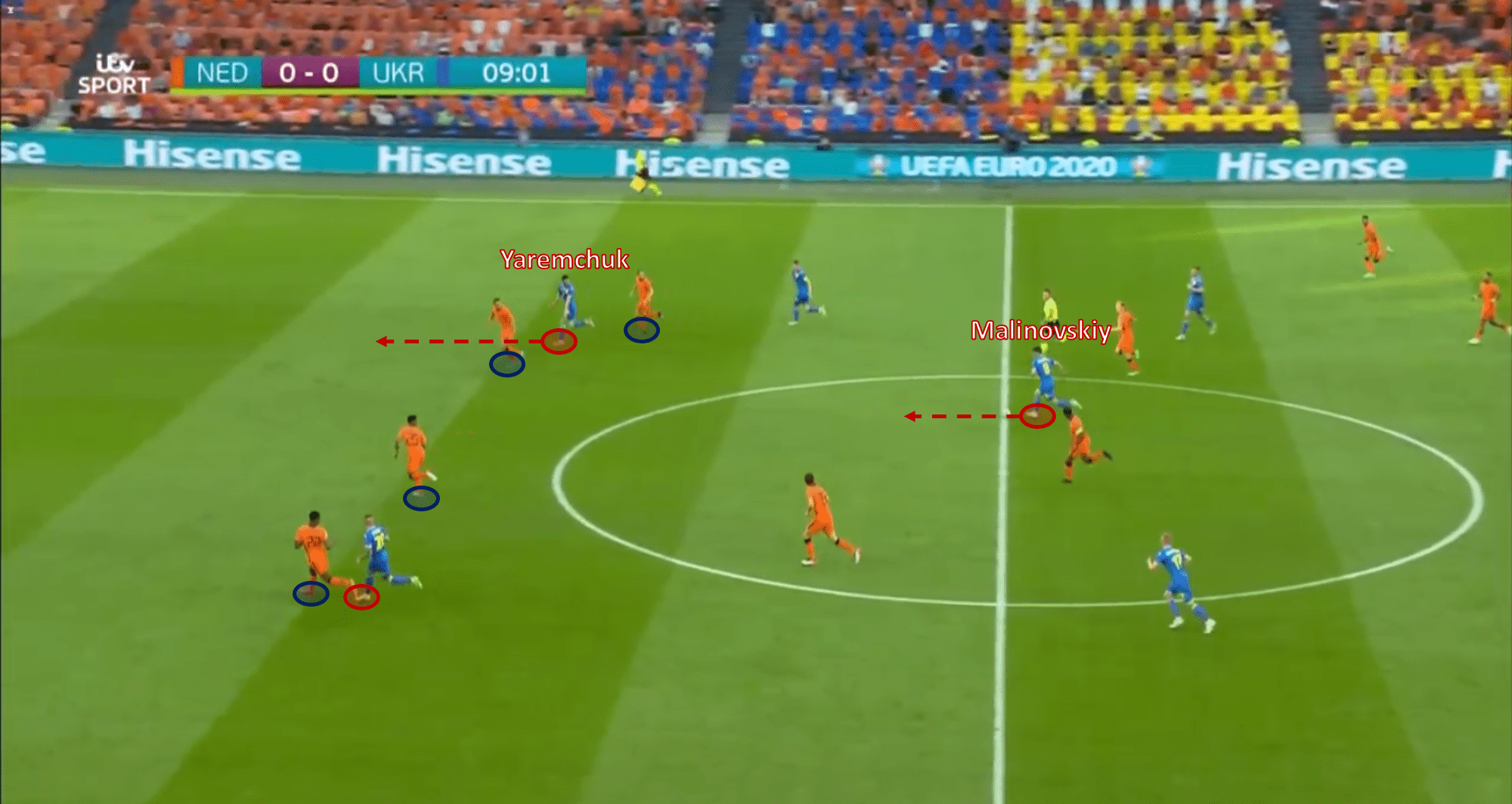
Approaching the halfway line, Malinovskiy has a few passing options going forward.
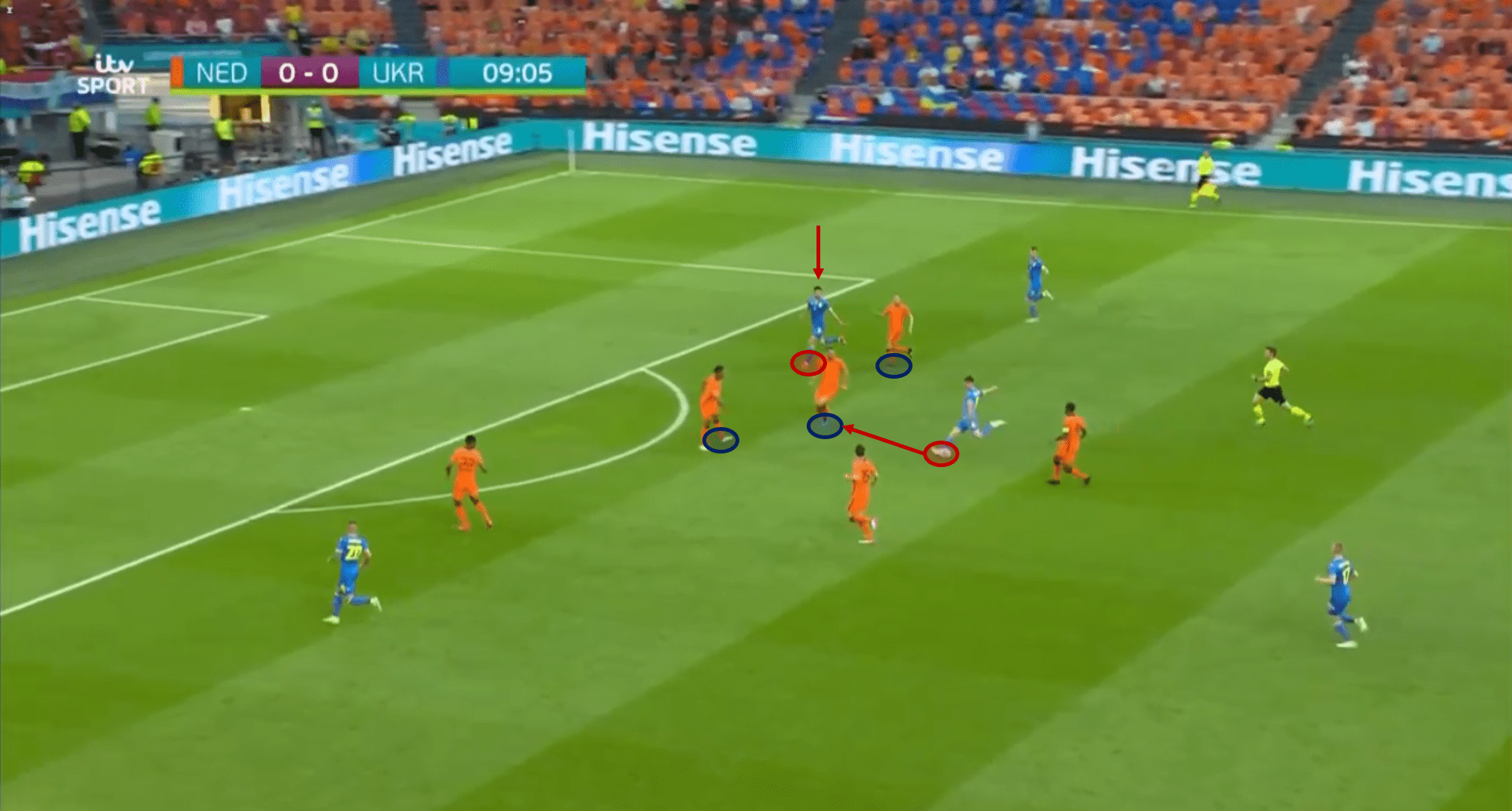
Despite Yaremchuk being in a great position to receive the ball (if he comes onside), Malinovskiy decides to shoot instead, which is blocked.
As a result, Yaremchuk only managed three shots in the entire match, but of course one of these goals was the one that drew the game level at 2-2. It preceded a passionate kiss to the camera lens as Ukraine, who looked drab offensively for a large period of the game, were back in the tie – momentum was in their favour. The goal was from a set piece, a guided effort that went flying past former Everton keeper Maarten Stekelenburg.
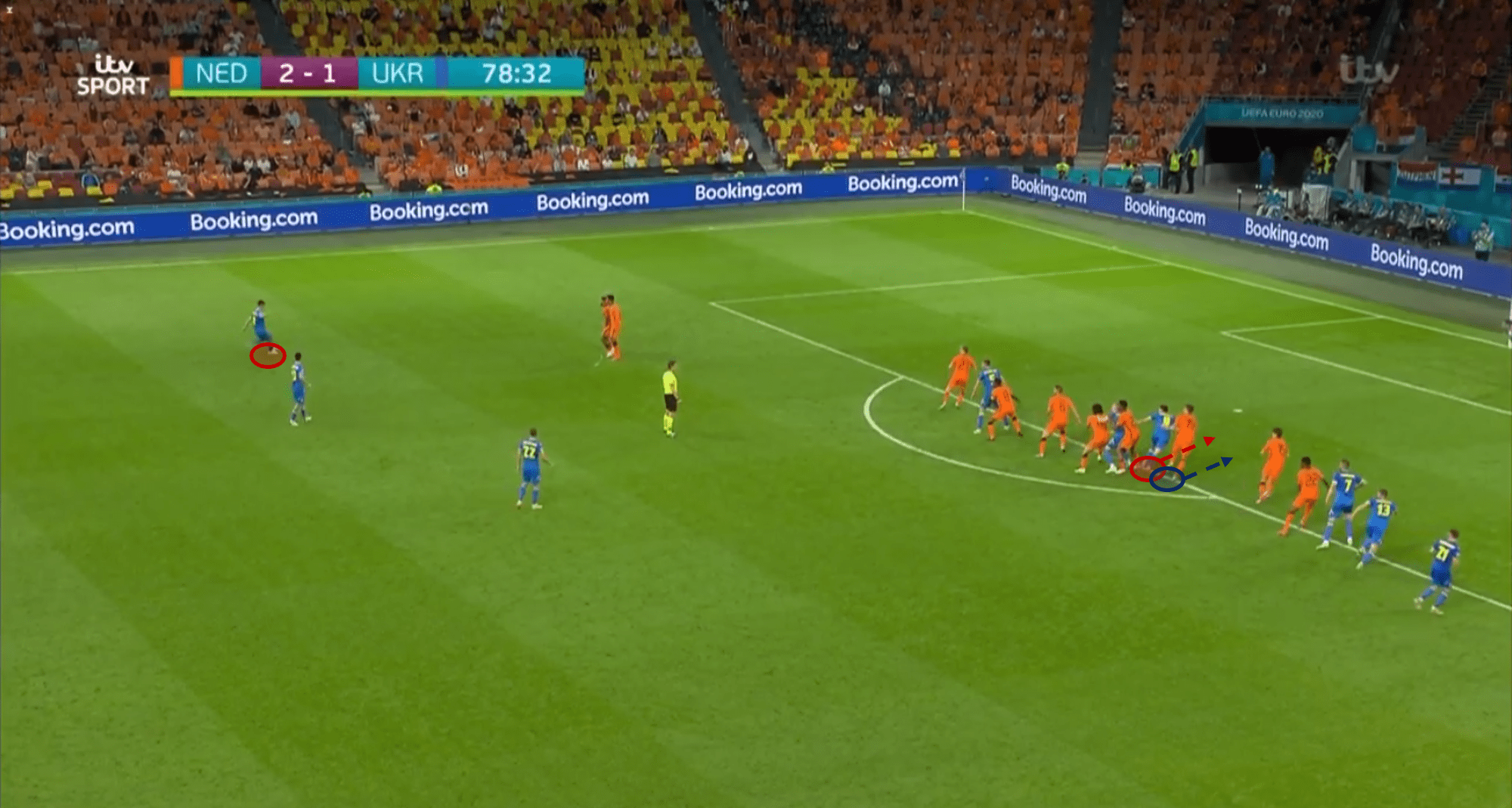
Yaremchuk begins his movement off the ball when Malinovskiy runs up to strike the ball.
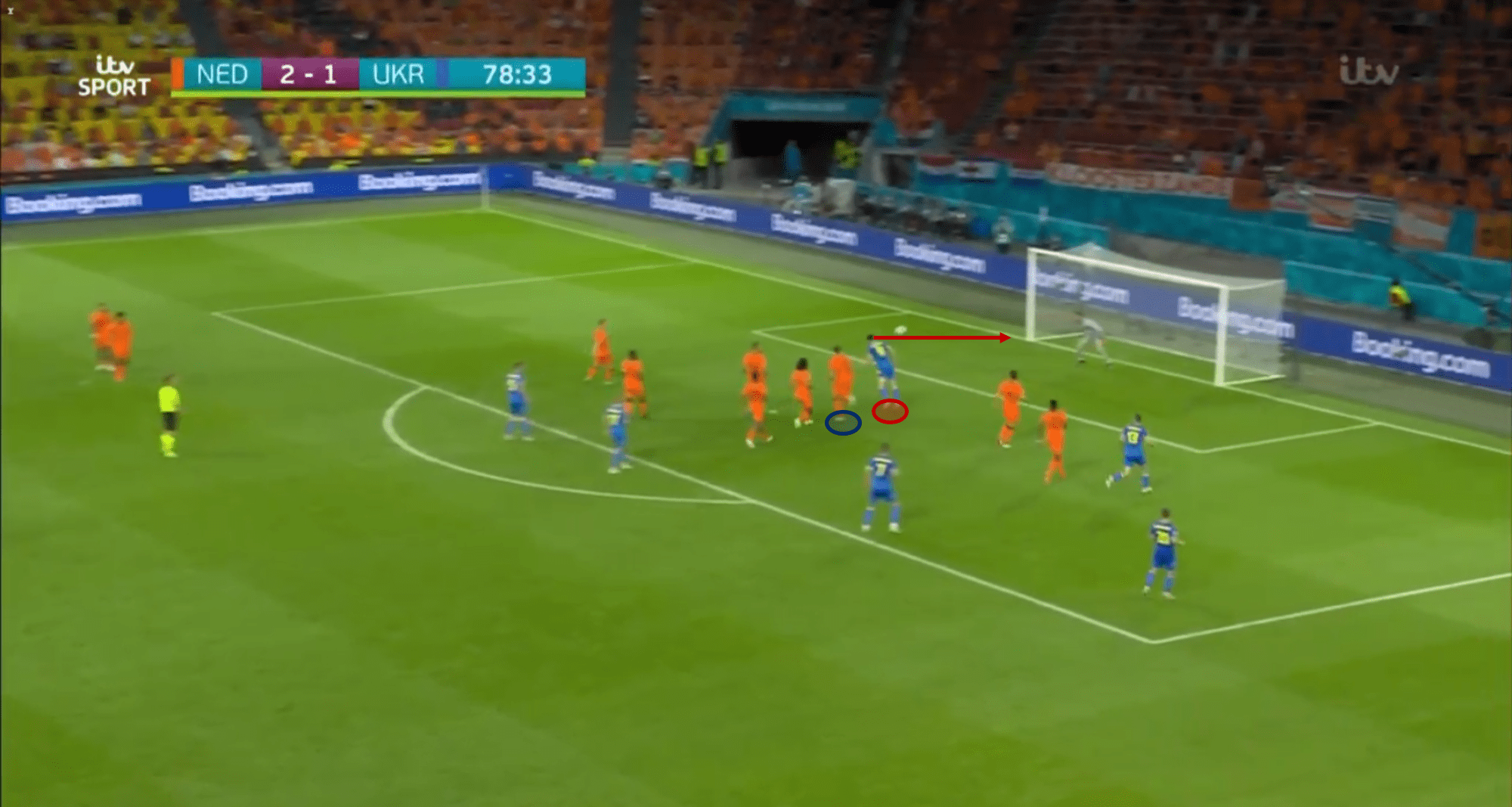
Yaremchuk sends the header capably into the top right past Stekelenburg.
Knowing when and when not to press could be key vs North Macedonia
Yaremchuk also pressed smartly in this tie, knowing when and when not to apply pressure, as not to completely tire himself out by the end of the match, but also to be effective in recovering the ball for his side. If the pass was slow, or backwards to the keeper, Yaremchuk began his charge to the ball-carrier, which occasionally resulted in Ukraine winning the ball back, or forced an error from the opponent.
His three tackles won at a 66.7% success rate was a good return for a forward in terms of volume, but it was the quality of these defensive efforts that impressed the most. He either won the ball back or rushed the defender into an error they did not want to make. It generally unsettled his opponent, which was indicative of his effectiveness.
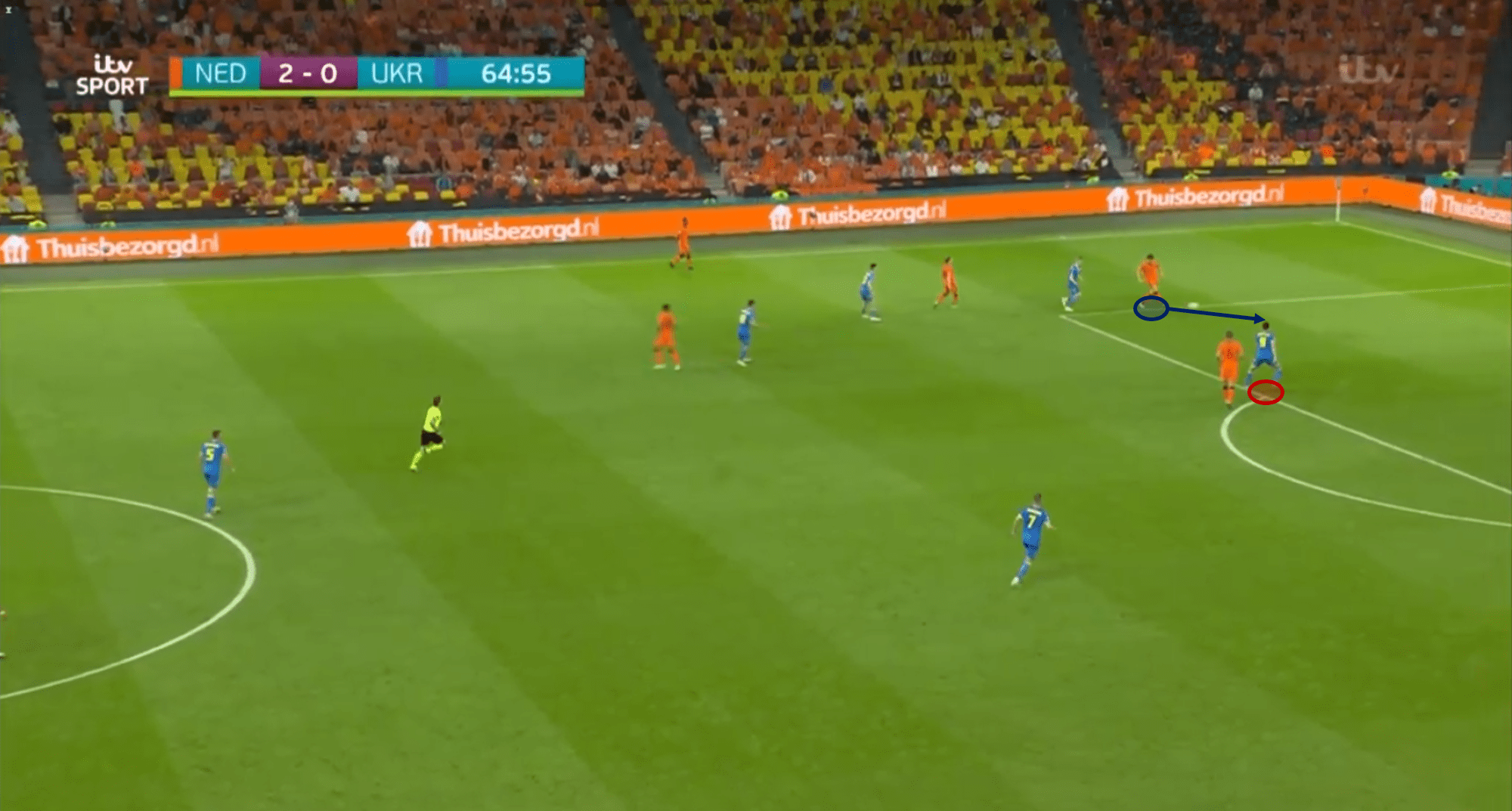
Here, the Dutch defender passes the ball back to the goalkeeper, instigating the pressing trigger for Yaremchuk.
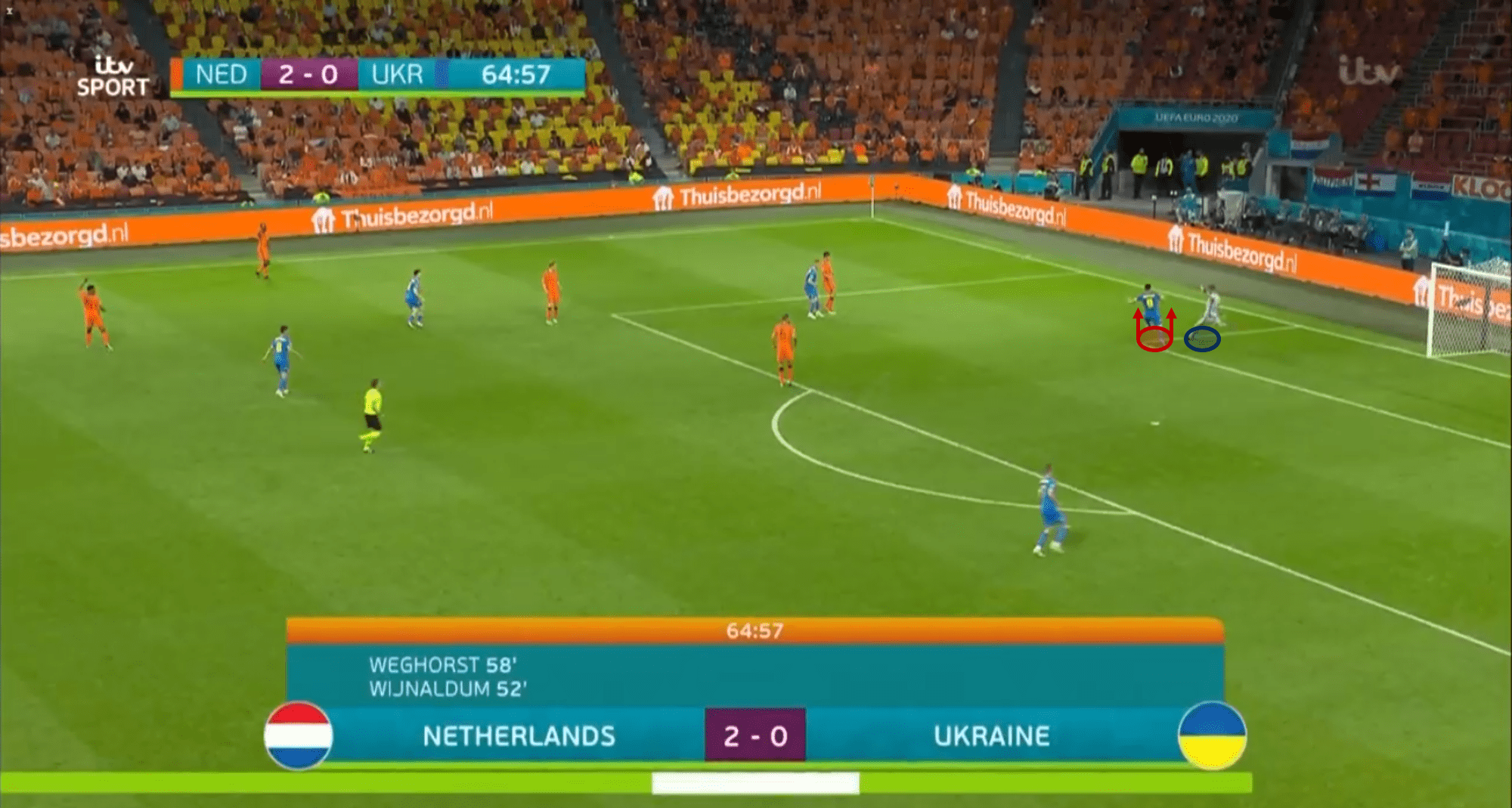
This is an example it could have gone wrong for the Netherlands if they lost the ball at this moment.
It helps that Yaremchuk possesses pace that can be quite startling for an opponent on the ball – initially looking quite laboured, before hitting full stride where he can compete with many defenders in a foot race. By the time he is near the ball, he can practically chuck his body in the way of the pass, be it high or low, or look to essentially harass the player instead.
Against North Macedonia, this will be key to victory. A semi-coherent press (which Ukraine to maintain) will be enough against this side to overwhelm. As long as his teammates join in, Yaremchuk should find success in aggressively pressing the North Macedonia centre-backs at the right moments. Perhaps choosing Viktor Tysgankov on the right-wing would be more suitable in this case, as he is the more capable presser out of him and Yarmolenko at least.
Predictions for the game
After their promising scoring display versus the Dutch, Ukraine should put away North Macedonia comfortably. Do not get it twisted, it will not be an easy match for Shevchenko’s men, but deploying a well-mannered press alongside some hopefully good chance creation from Malinovskiy in midfield, and Yaremchuk’s underrated movement, it could be a good game for the 6’1” Ukraine.





Comments